Sign up for daily news updates from CleanTechnica on email. Or follow us on Google News!
The Dacia Spring is the by far most affordable battery-electric vehicle on sale in Europe, typically starting under €20,000. It was also Europe’s 9th bestselling battery-electric vehicle (BEV) in 2023, registering almost 60,000 units. Where are the Dacia Spring’s competitors? The legacy auto brands are for the most part refusing to make affordable BEVs, so what’s available in China, and will it come to Europe?


Dacia is owned by Renault Group, and the Spring is made in China by Renault’s local partner Dongfeng. The Dacia-branded car is only marketed in Europe, where it has been on sale since H1 2021.
Renault and Dongfeng have sold the same underlying vehicle in China since 2019, first marketed there as the Renault e Nuo, the Venucia E30, and the Dongfeng EX1 (amongst other names).
The currently most prominent variant of the car on the Chinese market is the Dongfeng Nano Box, which recently had a styling and interior refresh, and is selling at volumes of close to 1,000 units per month (and ramping). Yet, this is just a fraction of the car’s sales in Europe. Why are its sales not higher, given that China’s BEV market has nearly three times the volume of that in Europe?
While the car currently stands alone on relative affordability in Europe, this is not the case in the Chinese market. Amongst the 230 different BEV models available in China, the Dongfeng Nano Box competes against many alternatives with directly comparable range and features.
In this article series we are going to have a look at these alternatives to the Spring and its Chinese twin. Are any of them likely to come to Europe and boost the competition in the segment of affordable BEVs?
Pricing The Dacia Spring & The Dongfeng Nano Box
Let’s first understand pricing. The European pricing of the Spring varies by country, according to what incentives are on offer. Dacia increases the price if the purchaser can access local incentives. For example, in Germany, where the “eco-bonus” incentive has recently been cancelled, the Spring is now priced at €12,750 (which they are marketing as a temporary discount from “normal” MSRP of €22,750). In Spain, where purchase incentives still exist, the same vehicle is priced at €18,920. At these prices the Spring is only “affordable” relative to other BEVs — similar sized ICE cars are priced from around €10,000.
The same car in China, the Dongfeng Nano Box, has an MSRP of €9,043 (70,700 RMB), including the same 26.8 kWh (gross) battery as we find the Spring.
However, deals on the Nano Box can be had for 54,700 RMB, or €6,996, for the same 26.8 kWh variant. Note that just like in Europe, the prices in China already include local VAT and applicable purchase taxes (although EVs are currently exempted from purchase taxes, so long as they are priced under 340,000 RMB, roughly €43,340).
Bear in mind that these are the prices of the Nano Box after its recent refresh, whereas the Dacia Spring’s pricing (above) is for an interior which is now 4 years old. What’s the difference? Well, let’s have a look at some photos, since the Dacia Spring is about to be refreshed also, and has been previewed as “the new Spring” coming to market in a few months time. Here are some exterior shots that show the styling differences (in order: current Spring, new Spring, Nano Box):
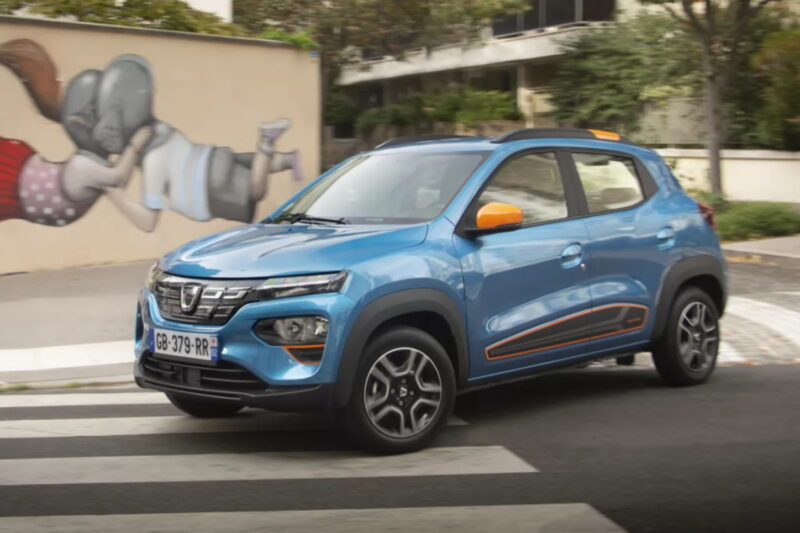





Here’s a view of their interiors, in the same order (current, new, Nano Box):


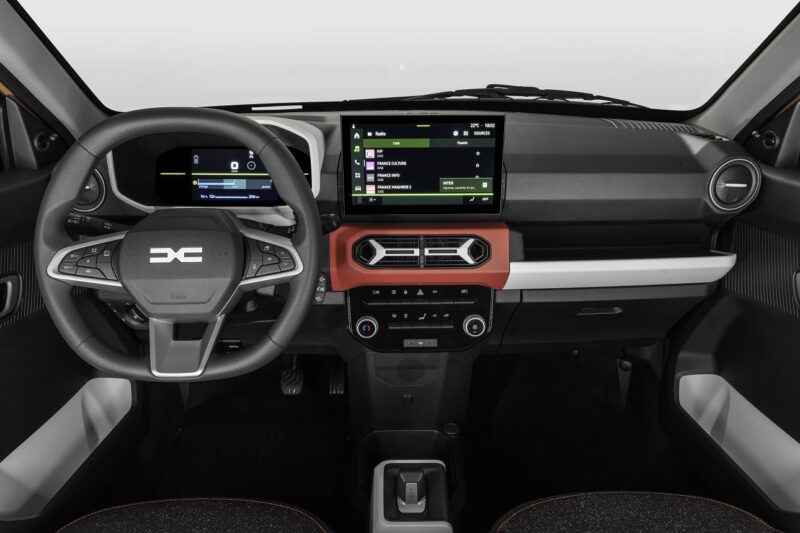

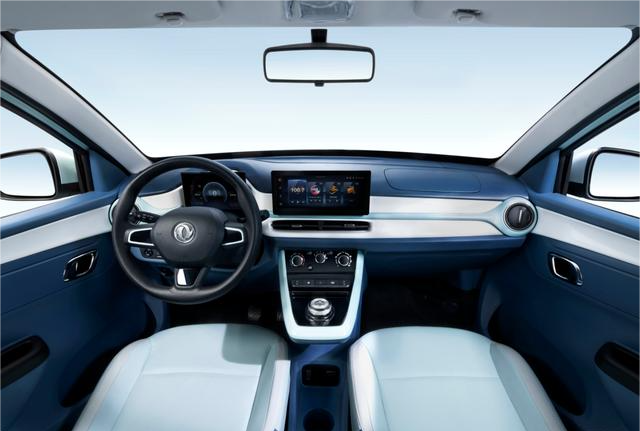

We can see that both the Nano Box and the new Spring have more modern interiors, and larger, floating infotainment screens.
What Are The Competing BEVs In The Home Market?
What are the Nano Box’s (and thus the Spring’s) main competitors in China? We’re looking for at least ~27 kWh battery, a ~33 kW motor, and able to DC fast charge to 80% in roughly 30 minutes. Why are we looking for Spring-like specs as a starting point? Although very modest compared to the expensive BEVs in Europe, the Spring is about the minimum specification that can, with some patience, just about handle all-round duty for many (if not all) drivers. It can do the usual daily local errands, school run, and commuting, but it can in principle also do occasional (“unhurried”) longer journeys with DC charging refills along the way.
The CLTC range rating for the Dacia-Dongfeng twins is just over 300 km (the CLTC is an urban-centric cycle which is unrealistic for European mixed driving). The Spring’s WLTP urban cycle rating is 302 km, and WLTP combined cycle rating is 230 km. For longer drives in Europe, the real-world range at modest highway or national route speeds (not much over 110 km/h) is around 150 km, in decent conditions. These aren’t cannonball-run vehicles, but with a charging-and-meal break, they can take a young family on a daytrip to the beach, or to visit a relative who lives a couple of hours away.
Besides battery size and charging, we’re also looking for models which at least roughly match the length of the twins, at 3,732 mm long. For context, this makes the twins a bit longer than the original Volkswagen Golf, and almost exactly the same length as the 3-door version of the original Toyota RAV4, or as the current Smart Forfour.
Given these characteristics, checking all of the 230 BEV models on sale in China, the twins’ immediate peers are the base BYD Seagull (aka Dolphin Mini), and the Leapmotor T03.
BYD Seagull
The BYD Seagull (aka Dolphin Mini) is already a celebrity, being the 7th bestselling BEV in the world in 2023, and 4th bestselling in China, despite only having launched in April last year.
It is 3,780mm in length, and has a base battery slightly larger than that in the twins — 30.08 kWh in the entry level Seagull. It can charge to 80% in around 30 minutes and has a CLTC range of 305 km.
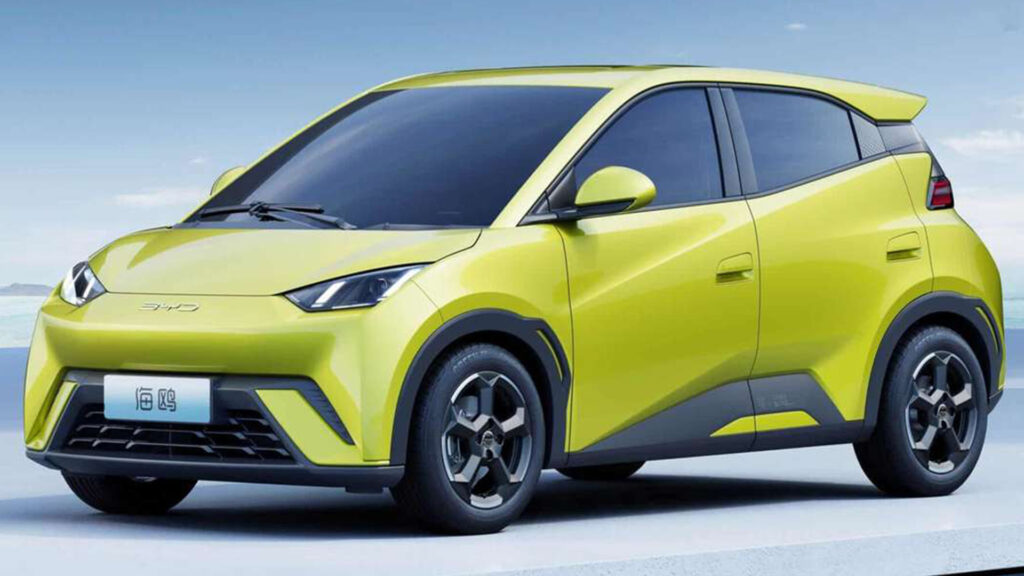

This 30.08 kWh version has an MSRP starting from 69,800 RMB, or €8,930. Given the high demand for the Seagull, it is hard to find discounted deals below MSRP right now. Note that there is also a 38.88 kWh option, priced at 89,800 RMB, or €11,490. All versions have a 55 kW motor, a good bit more powerful than the twins’ 33 kW motor.
The BYD Seagull is currently selling around 30,000 units per month (!) in China, compared to a bit under 1,000 per month for the Nano Box. Perhaps BYD’s whole-vehicle warranty of 6 years or 150,000 km is helping, since most peers have a 3-year, 120,000-km vehicle warranty. (Note that like in Europe, all BEV batteries are warrantied for 8 years in China).
For more of a sense for the BYD Seagull beyond these specs and photos, check out our coverage, and you can find dozens of video reviews on the usual media platforms.
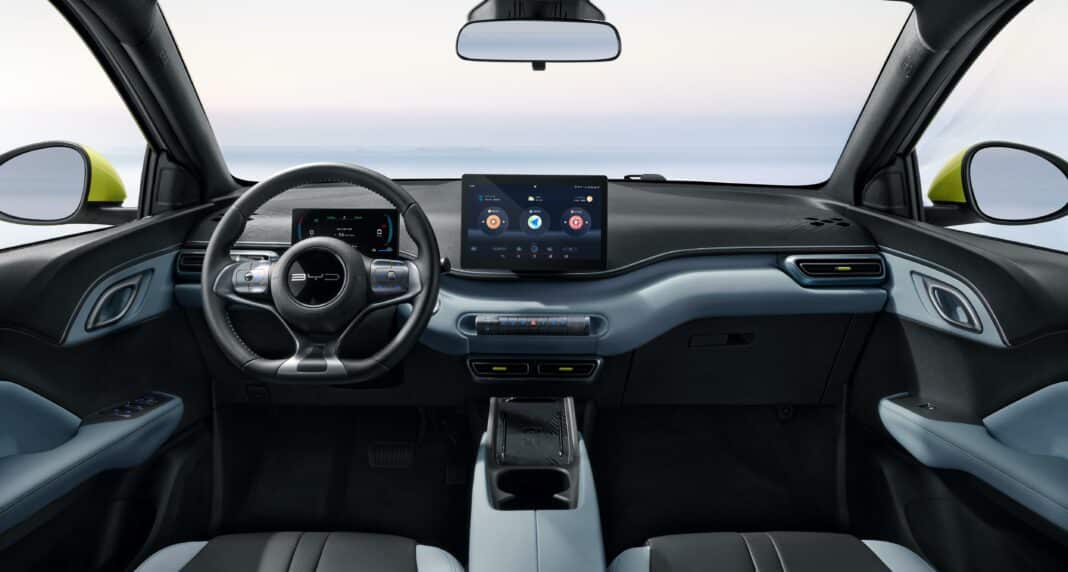

Leapmotor T03
The other close peer of the Dacia-Dongfeng twins, is the Leapmotor T03. This is another 4-door hatchback, with a similar format as Europe’s Smart Fortwo, with length of 3620mm, or about 10 cm shy of the twins. It launched in 2020, so is a bit newer than the twins (2019), but older than the BYD Seagull.
The variant with the closely matched 31.9 kWh battery (and DC fast charging) has an MSRP of 69,900 RMB, or €8,940. However, as with the twins, deals can be had for a good bit lower, in this case, with market prices around 59,900 RMB, or €7,660.
Even larger battery variants of the T03 are available, albeit at higher prices. The current largest battery option is 41.3 kWh, which (when optioned with DC fast charging) has an MSRP of 80,900 RMB, or €10,340. Deals can be found from around 70,900 RMB, or €9,065.
Like the BYD Seagull, the Leapmotor T03 has a 55 kW motor, so it is more powerful than the twins. However, unlike the Seagull, it has a more conventional 3-year, 120,000-km overall vehicle warranty (with 8 years on the battery).
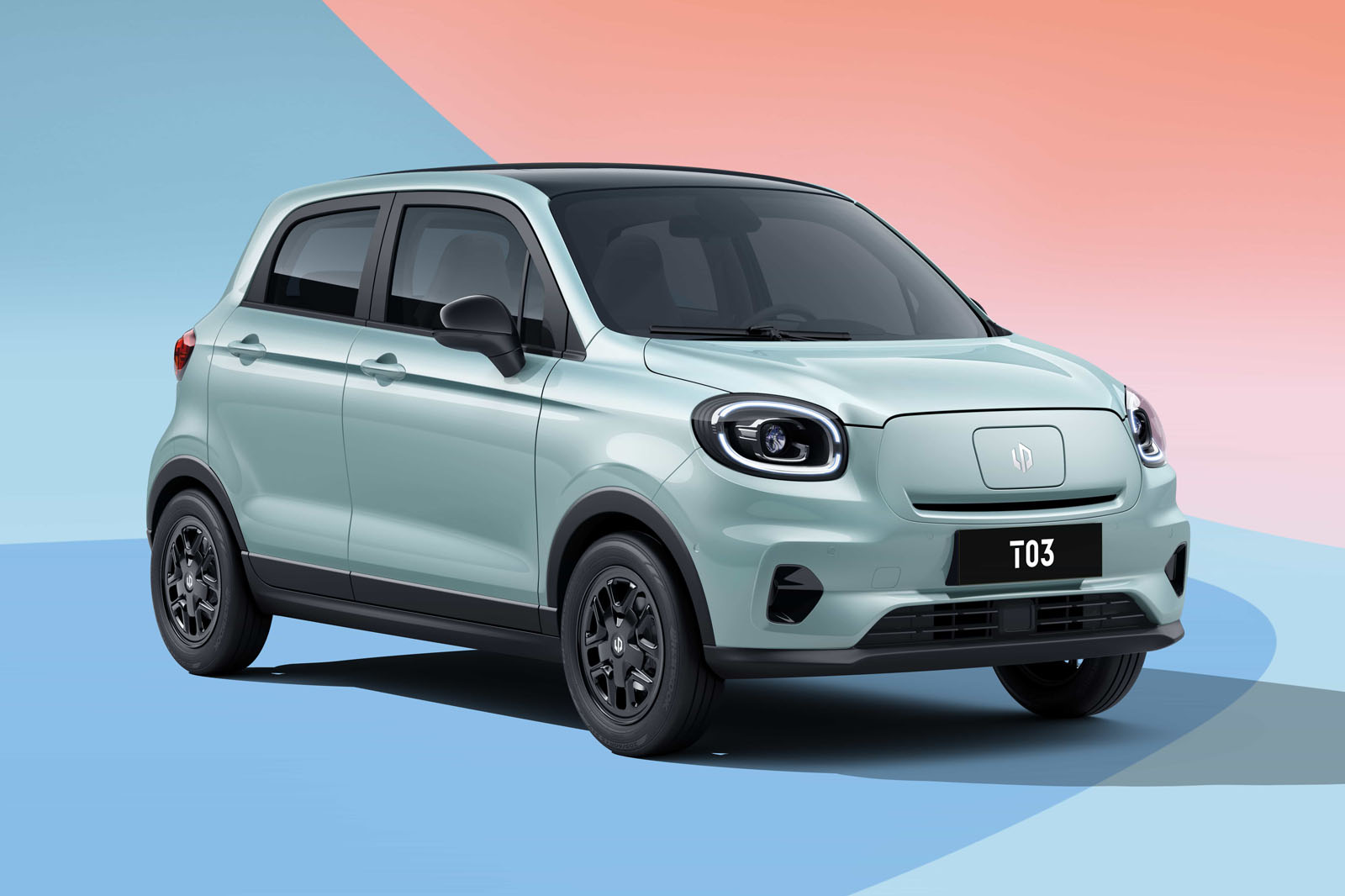

The Leapmotor T03 is very popular in China, recently selling at close to 5,000 units per month. It is already on sale internationally, in countries as far afield as Chile, Indonesia, and Turkiye, amongst others.
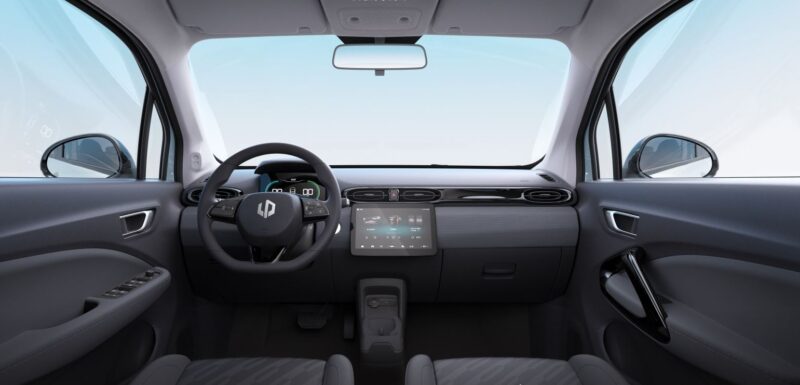

Interestingly, Leapmotor and Stellantis recently entered a partnership to market Leapmotor’s vehicles outside China, and are considering building a factory in Europe, so the T03 might yet come to the region at some point.
There are a couple of other BEV models that could be considered close competitors of the Dacia-Dongfeng twins. For example, the Changan Benni is the same length and has a 30.95 kWh battery option (with 45-minute DC charging), and a 55 kW motor, for 79,900 RMB, or €10,240 MSRP. Deals can be had for 72,700 RMB or €9,320.
The Benni is built on an older platform dating back to 2010 (like the Nissan Leaf and Renault Zoe), and has been sold in variously-named BEV forms since around 2015.
Similarly, the Sehol E10X (currently marketed as the Sehol Flower Fairy) is based on a platform dating back to 2010. Variously-badged EV versions of the platform have been on sale since 2016, though upgraded and refreshed several times. The current Sehol E10X iteration was debuted in 2021. It offers a 30.2 kWh version (with 45-minute DC charging), and a 36 kW motor, for a MSRP of 71,900 RMB, or €9,220. Not many sub-MSRP deals can be found for the E10X.
Note that Sehol is a joint venture brand, created in 2018 by Volkswagen Group’s SEAT and JAC Group. This begs the question — why hasn’t VW Group followed Renault Group and brought this affordable BEV to Europe?


The Benni and the E10X are decent vehicles and were popular in their heyday, but are coming toward the end of their lifecycle due to their aging platforms. This, and their slightly slower DC charging speeds, means that I am not ranking them on the same level as the Seagull and T03 we have looked at above.


Chip in a few dollars a month to help support independent cleantech coverage that helps to accelerate the cleantech revolution!
Not Minis?
Some of you may be asking, how about the Wuling Mini and other tiny BEVs, don’t some of them come with decent sized battery options these days? Yes they do. The Wuling Mini has a 26.5 kWh option and can DC charge to 80% in around 35 minutes (MSRP 62,800 RMB, or €8,040).
The Baojun Yep and the Changan Lumin have similar battery and charge options (at MSRPs of 79,800 and 69,900, respectively). All the other mini BEVs on the market either don’t offer such decent sized batteries, or don’t have practical DC charging speeds (or both).
Even for the few mini BEVs that do offer decent batteries and charging, notice that the pricing for these “big” battery variants is close to or above some of the other models we’ve looked at. This is a common issue in the auto market — the upper trims of models in one segment are often more expensive than the modest trims of models in larger segments.
But there’s a more intractable problem. The mini BEVs are at least 400 mm shorter in length than the Dacia-Dongfeng twins and the other BEV models we have looked at. More precisely, they have wheelbases of barely 2,000 mm (and less in the case of the Lumin). This is a shorter wheelbase than the original 1959 BMC Mini.
In practice, their small wheelbase, combined with their engineering intent to be used at modest urban speeds, means the minis are outside their element if called on to do highway speeds. Have a look at some review videos and note the frequent comments on their “imprecise” steering and stability when driven faster than modest urban speeds, if you remain unconvinced.
If only ever required for use at urban speeds, as they typically are in China, these minis are great value BEVs, no doubt. They can’t quite handle all-round duty, however, in the way that the Dacia-Dongfeng twins can just about manage.
Why Not Go Bigger?
Having mentioned the point that upper trim models of one segment often blur the boundary with the next segment above, why not look for potential competition for the twins at similar prices in the next size segment up?
As we step up in length from the twins’ 3,732 mm to 4,000 mm, several more models — with batteries at least as big, and similar DC charging speeds — present themselves. The best value amongst them include the Geely Geometry E, Neta Aya, Wuling Bingo, and even a younger brother of the Nano Box, the new Dongfeng Nammi 01.
Perhaps surprisingly, for the battery size we are looking for, all of these models have MSRPs of under 75,000 RMB, or €9,770, and deals can be found for considerably less!


This article is already a long read, so I’m going to leave you hanging here and we’ll jump into the details of these larger competing BEV models in part two. We’ll also discuss the prospects of any of these BEVs coming to Europe, and at what prices. We’ll also discuss the extent to which the Spring is overpriced in Europe because there is currently no competition.
Stay tuned, and check my article list to find the next installment within a day or so.
Have a tip for CleanTechnica? Want to advertise? Want to suggest a guest for our CleanTech Talk podcast? Contact us here.
Latest CleanTechnica TV Video


CleanTechnica uses affiliate links. See our policy here.








